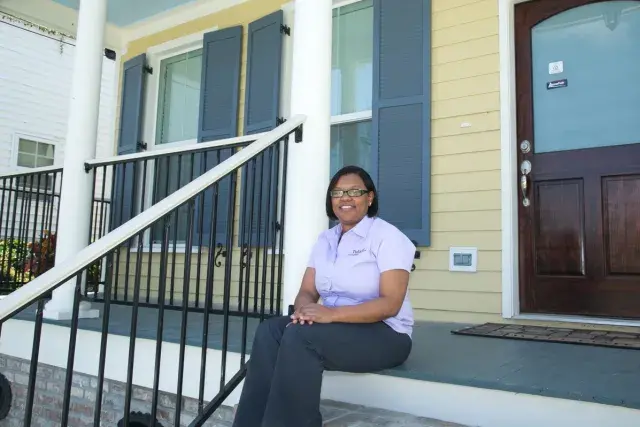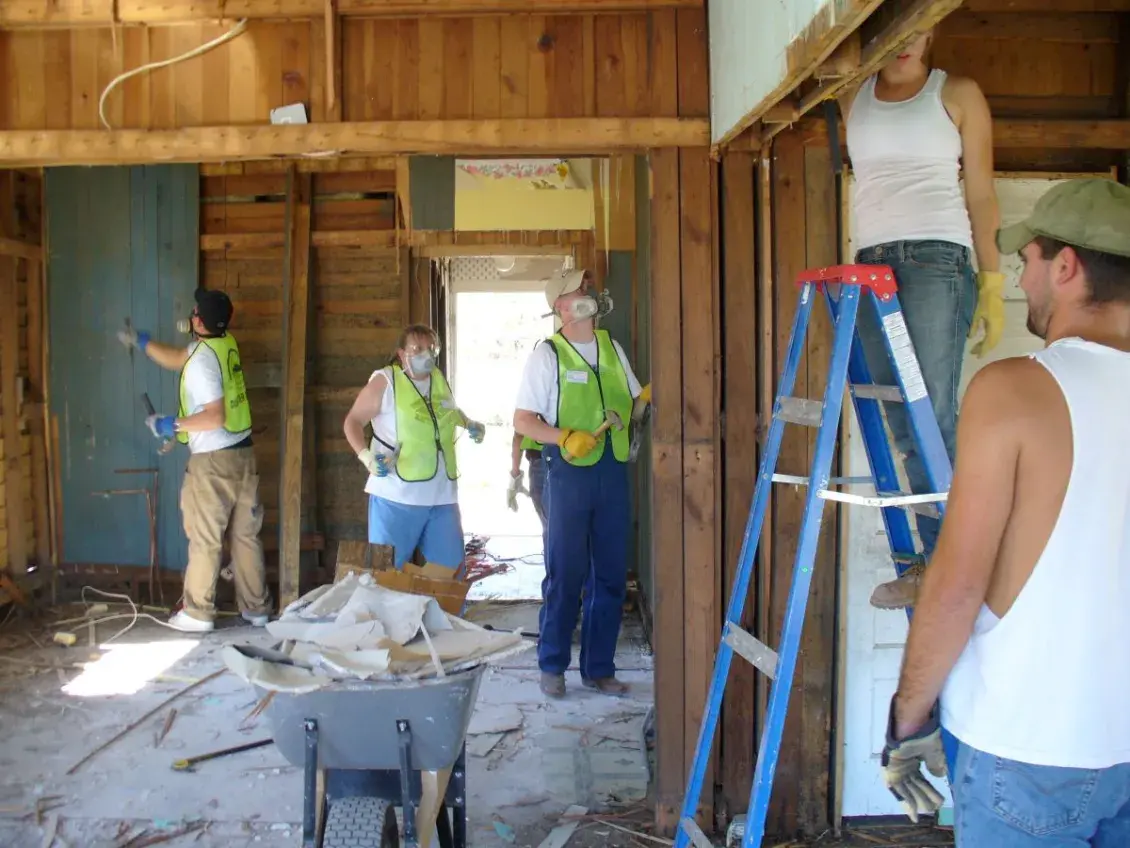On the Saturday before Hurricane Katrina made landfall, George Dupuy managed to secure one of the last RVs in the New Orleans area. The family packed it with essentials and personal belongings, before joining the miles-long traffic jam heading west.
What was supposed to be a brief evacuation turned into months at a KOA campground outside Lafayette, where displaced families forged community even as they faced staggering loss.
Dupuy’s own house, spared from total destruction, still took on two feet of water inside. The only way forward was to strip it down to the studs—exhausting work that proved unexpectedly therapeutic. He did the same for his mother’s and uncle’s homes, repeating the grueling cycle of demolition and recovery.
But Dupuy’s focus reached beyond his own family. As a longtime advocate for affordable housing and a senior vice president at Omni Bank at the time, he was also part of a massive effort to help thousands of Gulf Coast families and businesses rebuild.
Now, a senior commercial relationship manager at Home Bank, he talked about his experiences immediately after Katrina and the two decades since.
Serving Immediate Needs Right after the storm, the banks knew people’s biggest need was cash. With branches destroyed and systems down, local banks actually shared office space and handed out cash based on daily CDs (compact discs) of account balances. It wasn’t perfect, but it kept people going.
Omni Bank was very much in the forefront of trying to help people rebuild – their properties, their investment properties. In the wake of Katrina, Omni Bank made about 3,000 loans focused on rebuilding flood damaged properties.
[Now] There’s not a lot of big banks here, and there’s not a lot of people doing affordable housing (lending). It’s too complicated.

How Work Changed Katrina brought an influx of expertise in affordable housing construction and finance. Enterprise and other national groups brought in young, creative housing professionals who showed us new ways forward. They brought a whole new skill set to the area.
The federal government took off some of the constraints [caps on Low-Income Housing Tax Credits] off the subsidies, and it really moved the money. If they would have taken even more constraints off, we could have built a lot more housing.
Agencies that managed the funding were not too worried about density. They were focused on income levels. Mixed income was considered a healthier living environment.
In the Warehouse district, for example, a lot of the property was developed using the mixed income model with Low-Income Housing Tax Credits. Now, it’s all coming off its compliance (year 15), so the affordable part is going away. You are going to see a lot of nice properties that are no longer affordable. They’ll be market rate.
But deals were complicated—some projects had up to 10 funding sources. One project I worked on included a million dollars from Major League Baseball for veterans housing. It got done, but the process was painfully slow.
Challenges in the Aftermath Rebuilding was tough because everything was expensive. Everything cost a lot, and you were lucky if you found skilled labor.
The capital flowed right after Katrina, but once the official disaster period ended, it dried up—even though the need was still massive. That’s why projects like Lafitte have taken almost two decades. Lafitte Phase VII took awhile because of the regulations. Delays caused by complying with complex regulations resulted in increased costs which necessitated the search for additional funding. It was a vicious cycle.
You have to play with the cards you are dealt. A lot of these transactions take forever to close. If the programs were a little more streamlined, you could deploy the money more quickly and get more housing built.
We need a better sense of urgency and simpler programs. Every time there’s a mistake, a new regulation gets added, which only slows everything down.
A Focus on Homeownership Home Bank and OMNI Bank were able to utilize that [Enterprise's Louisiana Loan Fund] program to finance the construction of homes for resale. Enterprise provided an option for refinancing the bank if the homes took too long to sell to an income qualified buyer. That program allowed the bank to finance more spec homes than we would normally do.
Important Lessons Learned First, mixed-income housing works. Concentrating poverty doesn’t. Stronger neighborhoods are built when people of different income levels live side by side.
Second, keep it simple. Disaster recovery programs should move money quickly, without so much red tape. Delay just makes suffering worse.
Faubourg Lafitte's Final Phase Home Bank is the construction and bridge lender for the 51-unit Lafitte Phase VII project. We are only part of the financing sources for this project and are happy to get the closing completed. Home Bank is the purchaser of the 4% LIHTC bond issued by the Louisiana Housing Corporation.
The project is off to a rapid start, and we already know this team will produce quality housing that will finally complete the ambitious Lafitte development.
